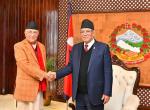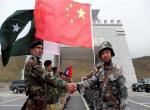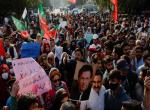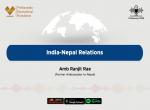Apart from being the first elections to be conducted by a legitimately constituted civilian set-up on completion of a full term by a democratically elected government, Pakistan’s upcoming elections scheduled for May 11, 2013, are notable in more than one way. Firstly, this will be the bloodiest election in Pakistan’s history. From April 21 to 28 alone, there were as many as 20 attacks on political parties, resulting in 40 deaths and 190 wounded.
Secondly, there is no single overwhelming factor to influence voting like the sympathy wave that brought the Pakistan People’s Party (PPP) to power in 1988 and 2008.
Thirdly, a relatively unknown factor will influence the outcome, in terms of the youth vote with 31 per cent of the voters aged between 18 and 29.
These elections, like the ones held earlier, will not be free and fair as the heavy hand of the Tehrik-i-Taliban Pakistan (TTP) has been evident right from the scrutiny of candidates to election rallies. Electoral officers have been influenced by it, with a wink and a nod from the army and the judiciary, to rigidly interpret Articles 62 and 63 of the Constitution to disqualify “undesirables” from the elections. For instance, doubts about the absence of anyone’s Islamic credentials have been invoked to disqualify many a candidate. Inevitably, this has most hurt left of centre parties like the PPP, Muttahida Quami Movement (MQM) and Awami National Party (ANP). These parties have also been specifically targeted by the TTP through physical intimidation because of their “secular” leanings and endeavours to take on militancy. As a result, they have not been able to campaign effectively and their election rallies have been few and far between. Thus, the election scene is skewed in favour of Islamist candidates and right of centre parties like Imran Khan’s Pakistan Tehreek-e-Insaf (PTI), Pakistan Muslim League (N) and a slew of Islamic parties like the Jamaat-i-Islami and the JUI (F).
This, coupled with the anti incumbency factor generated by years of massive misrule, will result in a sharp decline of seats won by the PPP and its allies, notably the MQM, ANP and PML (Q).
The PPP, hitherto was the largest party in Pakistan with 126 seats in a house of 342, is likely to get no more than 60-70 seats on account of the reasons cited above, extreme demoralisation and the absence of any star campaigner like Benazir or the sympathy factor. It will take massive losses in Khyber Pakhtunkhwa and Baluchistan where the increasingly radicalised electorate will be much more supportive of right of centre and Islamic parties. It is likely to get only five or six seats as against the 19 in the previous elections. In Punjab, too, from where it obtained 63 seats in the last elections, it will possibly witness major losses as it is clearly unpopular in urban Punjab and may be expected to obtain around 30 seats mainly from Southern Punjab. In Sind, it will retain its core support but as against the 40 seats it secured in the last elections it is likely to only get around 30.
Nawaz Sharif’s PML(N), the second largest party in the last elections with 91 seats, of which as many as 81 were from Punjab, is widely expected to emerge as the largest party with a projected 110 to 120 seats in the upcoming elections. This will, however, not enable it to form a government on its own even if it is able to win over many independents. The party’s somewhat improved showing will result from the absence of any anti-incumbency factor as its rule in Punjab had provided acceptable levels of governance and had certainly not been disastrous. The decimation of the PPP vote bank and that of the latter’s ally PML(Q), which in the last elections got as many as 35 seats in the Punjab, and PML(N)’s own conservative Islamic affiliations will naturally stand it in good stead in a steadily radicalising Pakistan. As in the previous elections, the bulk of PML(N)’s seats will come from Punjab, mainly at the cost of the PPP and PML(Q), and will most likely increase from 81 to little over 100. It may also be expected to get an additional 15 seats from the other three provinces as against only five in the last elections, giving it a total strength of 110 to 120 seats.
The third largest party is likely to be the PTI. Estimates about the seats likely to be secured by this party are the most variable, ranging from 10 to 100. The uncertainty of its showing stems from the fact that it is a new party with a fragile organisational structure which is, of course, compensated to an extent by Imran Khan’s name, recognition and popularity, particularly among the youth. Whether his popularity will translate into votes is a question mark. The bulk of the party’s support will come from Khyber Pakhtunkhwa and Punjab. In the former, it could get around 15-20 seats out of a total of 43 and in the latter it could get around 30 by eating into the PML (N), PML (Q), and PPP.
In Sindh the MQM, which has hitherto been the predominant party, will likely see some decline in strength with its seats falling from 25 to 15. Similarly, Khyber Pakhtunkhwa, which was the stronghold of the ANP, will see a dramatic decline in the fortunes of that party with its seats declining from 13 to three or four. Islamic parties like the Jamaat-i-Islami and JUI (F) will be the main beneficiaries of these developments in both provinces, apart from the PML (N) to a less extent.
An election outcome with a fractured mandate as projected above in which no party will be able to form a government on its own even with the support of independents will be unfortunate for Pakistan. More so, because none of the three largest parties notably — PML(N), PPP and PTI — will find it easy to link up with either of the other two due to their differing ethos and backgrounds, and as far as the PPP is concerned even ideology.
Should political expediency drive any two to form a coalition government, this is likely to be riven by dissent and an inability to effectively address the many pressing economic, security and foreign policy issues facing the country. Indeed, this could ultimately lead to a reversion to military rule.
As far as India is concerned, while all the three major parties profess to want good relations with the neighbour, each is also focused on Kashmir. The PTI refers to the resolution of the Kashmir “dispute” as a core issue, while the other two stress the need to take into account the UN resolutions for its closure. But above all, we should be concerned by the increasingly radicalised nature of Pakistani polity which does not bode well for us.
Published Date: 10th May 2013, Image Courtesy: Reuters










Post new comment